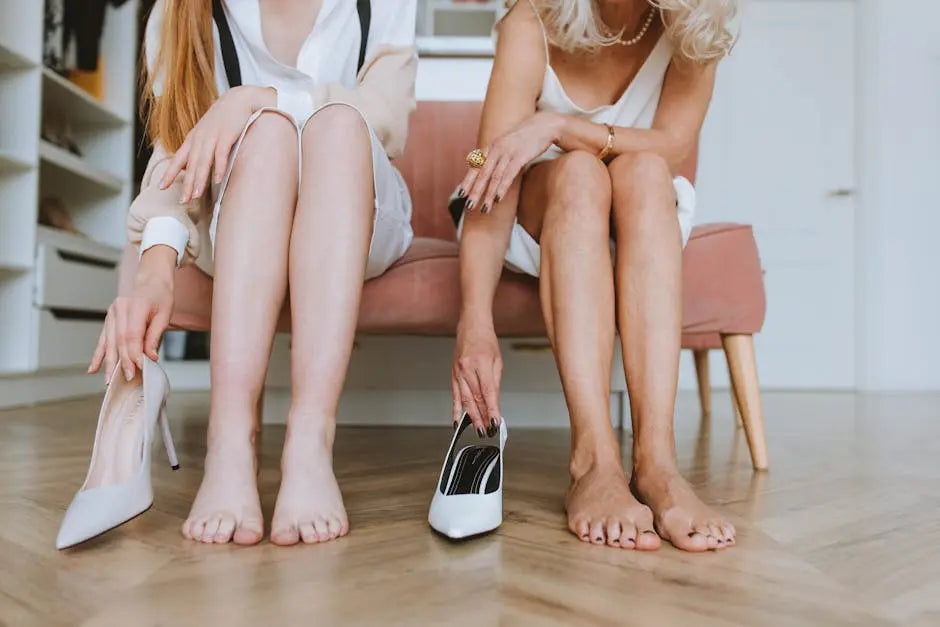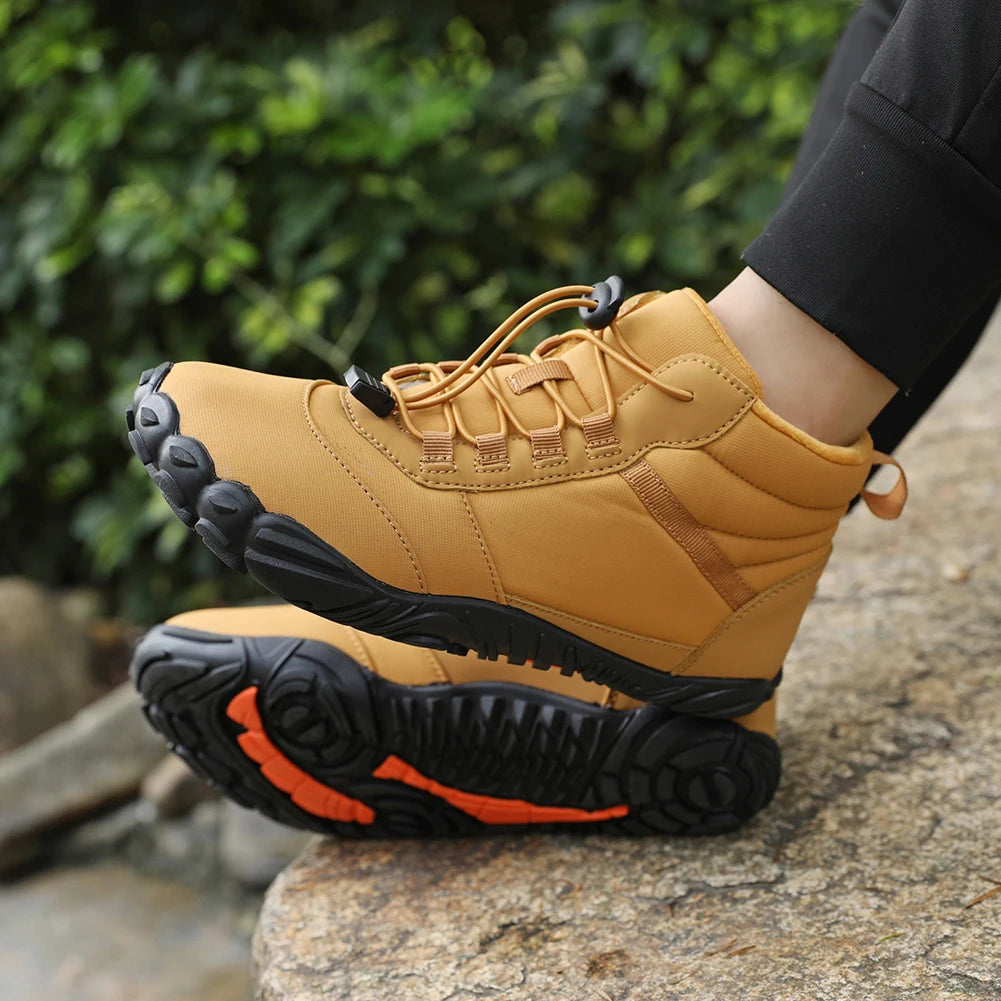
Barefoot Shoes for Plantar Fasciitis: Natural Comfort and Pain Relief
Plantar fasciitis can be a painful and debilitating condition, but the right footwear can make all the difference. In this blog post, we’ll explore how barefoot shoes can offer natural comfort and effective pain relief for those suffering from plantar fasciitis. We’ll discuss what plantar fasciitis is, how barefoot shoes can help, and what to look for when choosing the best pair to support your feet.
Understanding Plantar Fasciitis
Plantar fasciitis is a common foot condition that causes heel pain and discomfort. It occurs when the plantar fascia, a thick band of tissue running across the bottom of your foot, becomes inflamed. This inflammation can be due to various factors, including overuse, improper footwear, or anatomical issues.
The plantar fascia acts like a shock absorber, supporting the arch of your foot. Overstressing this ligament can result in small tears, leading to inflammation and pain. One of the main symptoms is a stabbing pain in the heel, which is often more severe in the morning or after periods of inactivity. Activities that further strain the plantar fascia, such as running or standing for long periods, can exacerbate the pain.
Several risk factors increase the likelihood of developing plantar fasciitis. These include age, as the condition is most common in individuals between 40 and 60. It also tends to affect runners, people with flat feet or high arches, and those who are overweight. Wearing shoes with inadequate support can significantly contribute to the development of plantar fasciitis. Understanding these risk factors can help in taking preventive measures and managing the condition effectively.
What Are Barefoot Shoes?
Barefoot shoes are designed to mimic the natural shape and movement of your feet. They typically have a minimal sole, wide toe box, and flexible materials that allow your feet to move freely and naturally. Barefoot shoes aim to promote better foot health and strengthen the muscles in your feet by allowing them to function as they were intended.
Unlike traditional shoes that often have raised heels and rigid structures, barefoot shoes encourage a more natural gait and posture. This design is based on the concept known as ‘minimalist footwear,’ which aims to let your feet engage in a motion more akin to walking barefoot on natural surfaces. The idea is to protect your feet while allowing them to move, flex, and strengthen naturally, thereby reducing the strain on your foot’s intrinsic muscles and ligaments.
Barefoot shoes come in various styles, including both casual and performance-oriented options. They generally have a zero-drop sole, meaning there’s no height difference between the heel and the toe, which helps maintain the foot’s natural alignment. Barefoot technology shoes are revolutionizing comfort and style, making them not only a healthy choice but also a stylish one.
How Barefoot Shoes Can Help with Plantar Fasciitis
Barefoot shoes can help alleviate plantar fasciitis pain by promoting natural foot movement and providing better support. When your feet are allowed to move naturally, it can reduce the strain on the plantar fascia and help improve your overall foot mechanics. Additionally, the wide toe box in barefoot shoes helps distribute weight evenly across your foot, reducing pressure on the heel.
One of the most significant benefits of wearing barefoot shoes is the encouragement of a forefoot or mid-foot strike rather than a heel strike, which is common with traditional shoes. This shift can decrease the impact forces on your heel and, consequently, on the plantar fascia. Moreover, the minimalistic design of these shoes strengthens the foot muscles, providing better support for the entire foot arch system in the long run. According to Heel That Pain, while barefoot walking has benefits, supporting the feet correctly is crucial, especially for those with plantar fasciitis.
The flexibility and pliability of barefoot shoes enable the feet to adapt to various terrains, which could potentially improve balance and proprioception. By constantly engaging the foot muscles to stabilize on different surfaces, barefoot shoes can enhance your foot’s resilience against stress. The natural movement of your toes and foot muscles can act as a form of ‘exercise’ that strengthens the plantar fascia over time, reducing the severity and frequency of plantar fasciitis symptoms. This natural foot movement aligns with the principles discussed in The Health Benefits of Switching to Barefoot Walking Shoes.
Choosing the Right Barefoot Shoes for Plantar Fasciitis
When selecting barefoot shoes for plantar fasciitis, it’s essential to consider a few key factors. Look for shoes with proper arch support, a cushioned sole, and a wide toe box. It’s also important to transition gradually to barefoot shoes, allowing your feet time to adjust and strengthen. Some popular options include brands like Xero Shoes, Vivobarefoot, and Merrell.
It’s beneficial to look for barefoot shoes that offer a combination of flexibility and slight cushioning. While complete minimalist shoes can be advantageous for some, others might require a bit more cushion to ease the transition period. The best barefoot shoes should provide a good fit, ensuring that your feet don’t feel cramped. The toe box should be spacious enough to allow your toes to splay and engage naturally. Proponents of lightweight running shoes often cite their minimal interference with the natural foot mechanics, making them a favorable choice for managing plantar fasciitis.
Durability and breathability are also critical factors to consider. Shoes made from high-quality, breathable materials can prevent foot fatigue and keep your feet cool and dry, which is crucial for individuals with plantar fasciitis. When transitioning, it’s useful to start with comfort-fit shoes that offer a balance between support and freedom, helping you gradually adapt to a more minimalist shoe.
Tips for Transitioning to Barefoot Shoes
Switching to barefoot shoes requires a gradual transition to avoid injury or discomfort. Start by wearing them for short periods and gradually increase the duration as your feet become more accustomed to the new footwear. Incorporate foot-strengthening exercises into your routine, and listen to your body to ensure a smooth and pain-free transition.
Begin with wearing your barefoot shoes around the house or for short walks before fully integrating them into more strenuous activities like running. This period of adaptation is crucial for building the necessary muscle strength and flexibility. Simple exercises like toe curls, calf raises, and arch lifts can significantly speed up the acclimatization process. The goal is to transition smoothly without overwhelming your foot muscles and ligaments.
Listening to your body during the transition is paramount. You might experience mild discomfort as your feet adjust—but any sharp pain should be a sign to slow down. If you’re recovering from plantar fasciitis, it’s a good idea to monitor your condition regularly and consult with a healthcare professional to tailor a transition plan that suits your specific needs. The flexibility and adaptability of barefoot shoes can be a game-changer, but only when incorporated smartly into your routine.
Engaging in activities that further strengthen your feet, such as yoga or balance exercises, can complement your transition to barefoot shoes. These practices enhance muscle coordination and balance, supporting the overall health of your feet. Combining these routines with the gradual introduction of minimalist footwear can pave the way for a successful and sustainable transition.
Finding Relief with the Right Footwear
By considering barefoot shoes as an option, you may find the comfort and relief you need to manage plantar fasciitis. It’s all about finding shoes that support your feet naturally and allow for proper movement. Remember to consult with a healthcare professional before making any significant changes to your footwear, and take the time to transition to barefoot shoes gradually. Your feet will thank you for the extra care and attention! Find the perfect pair today at Bearefoot.
- Choosing a selection results in a full page refresh.
!
















































